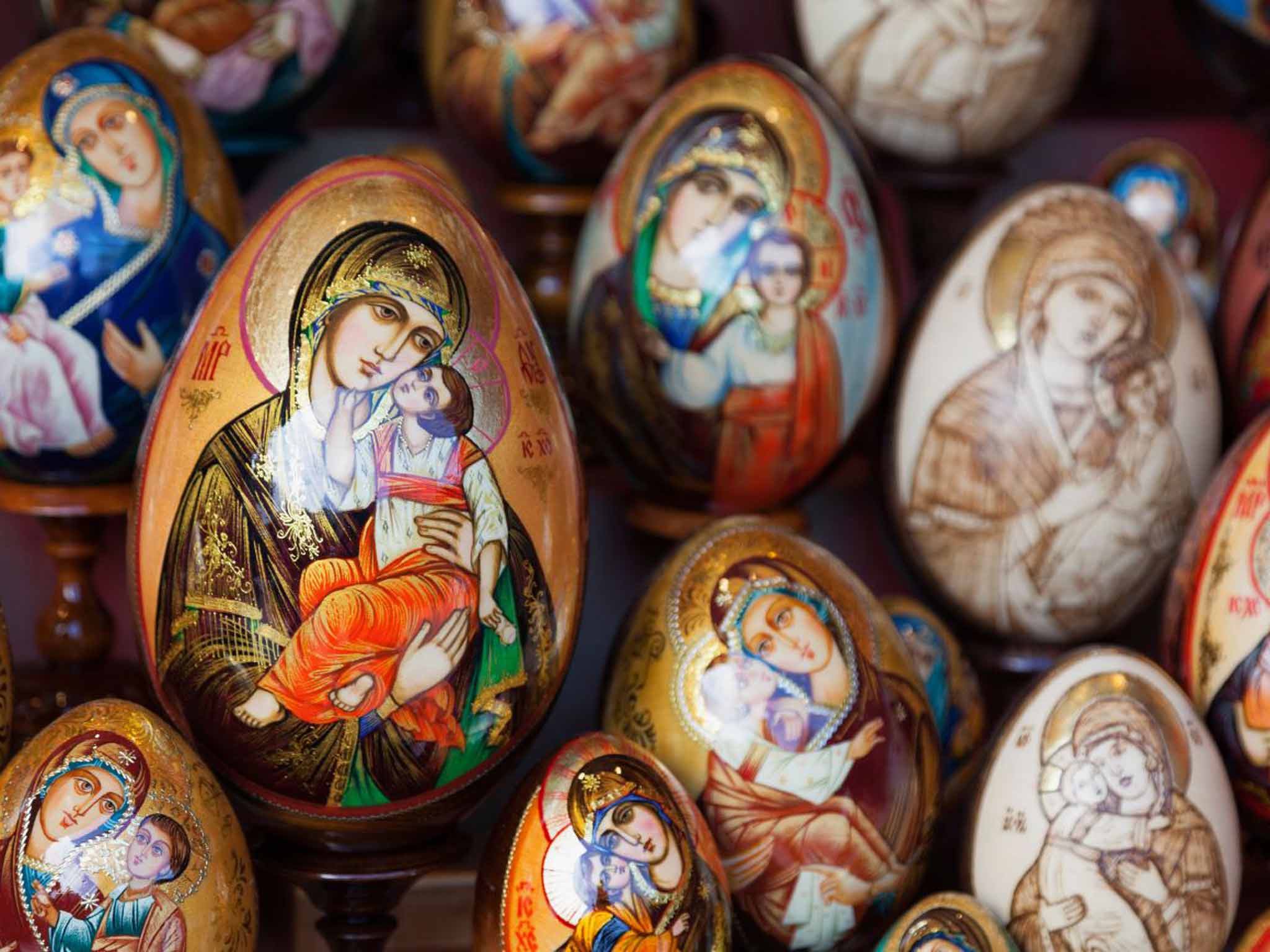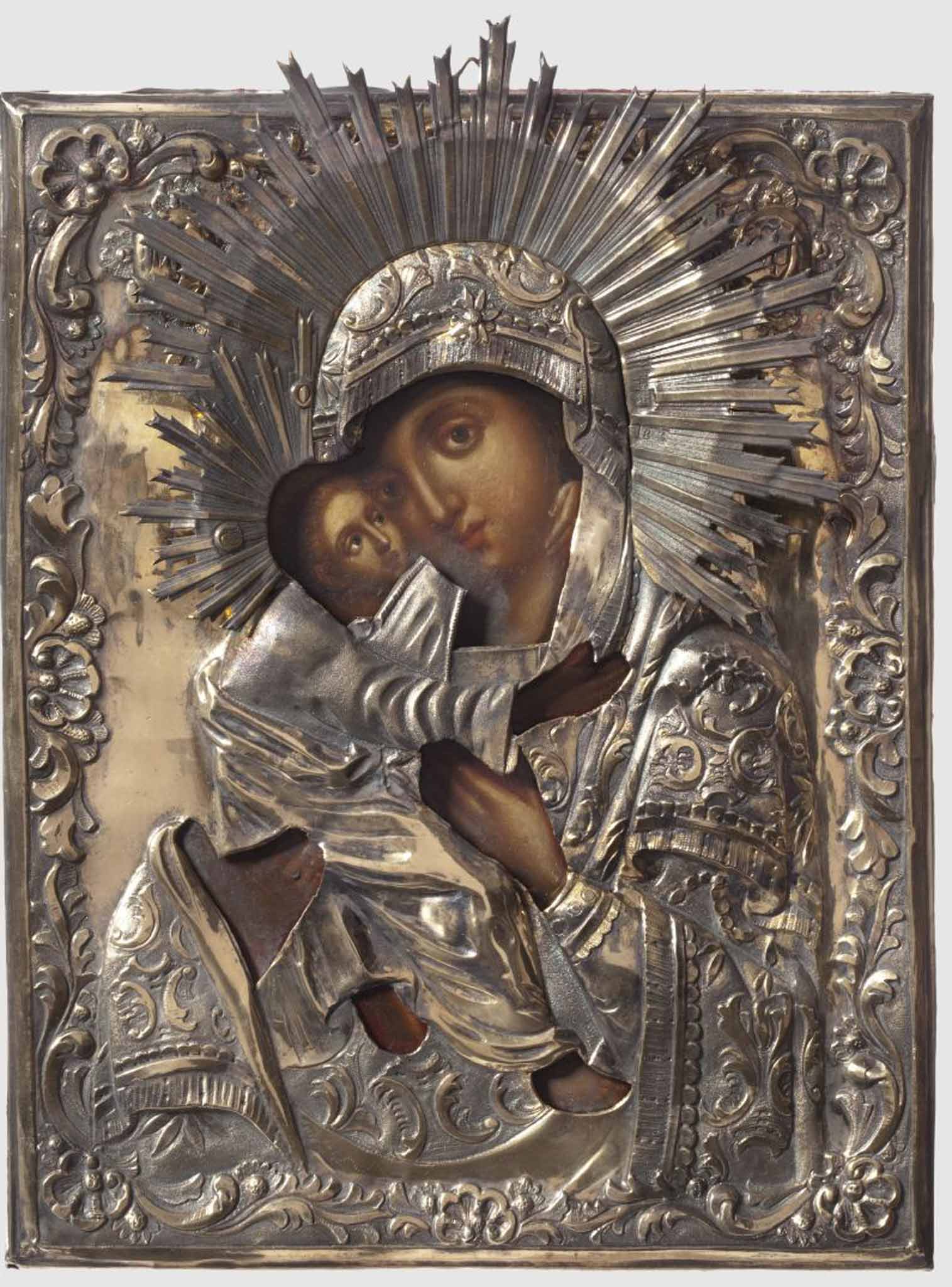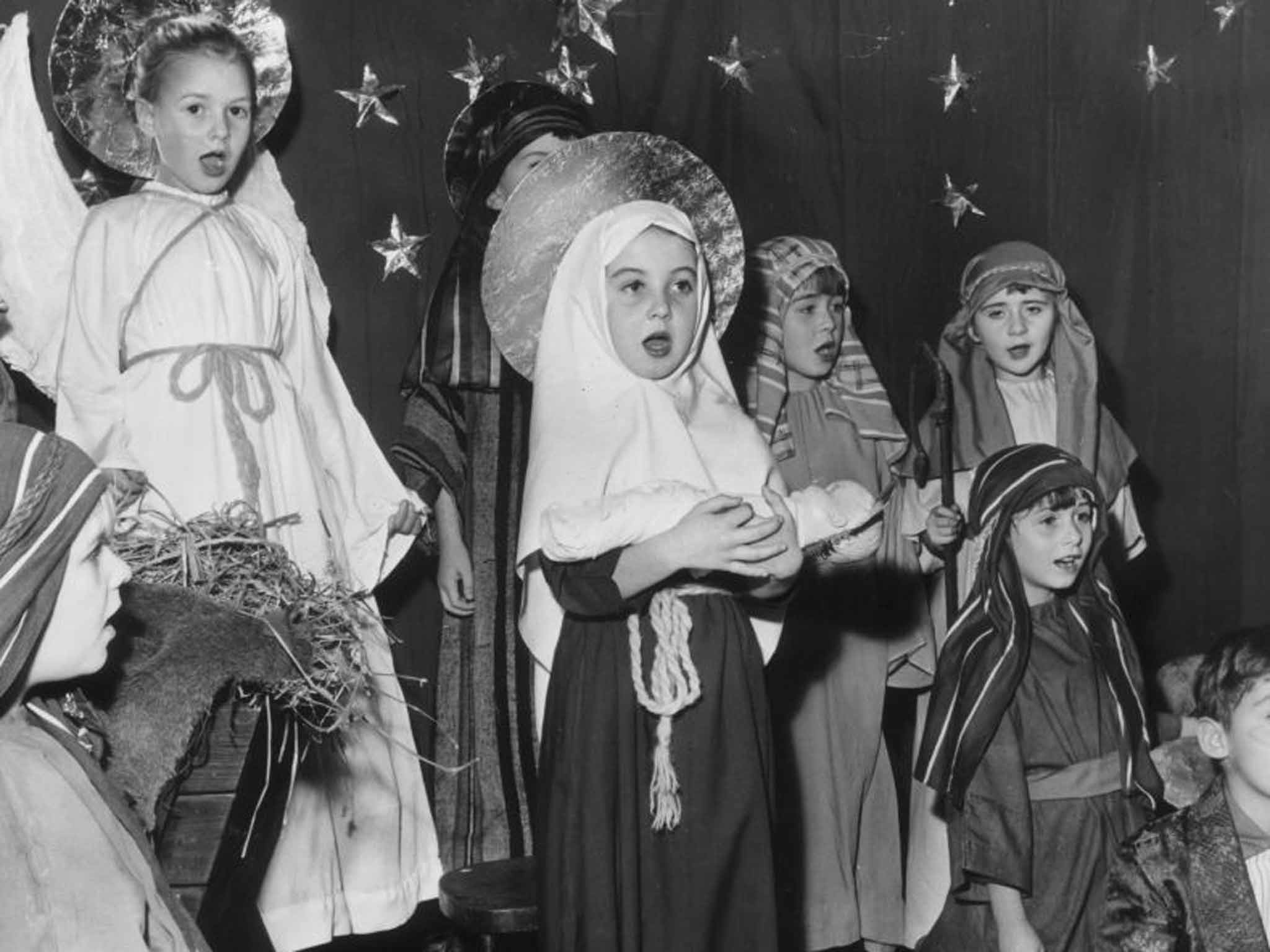The appeal of the Virgin Mary: A supernatural hope at a time of scepticism
Noah and Moses have both had the Hollywood treatment and next year it's the Virgin Mary's turn. But what is it about Our Lady, whose presence in the gospels is patchy at best, that means she still appeals to those of all creeds and none?


After Noah and Moses comes the Virgin Mary. No, it’s not a telephone poll to decide which biblical character has the PX Factor (the two Greek letters interwoven and used by believers as a symbol of Christ). Instead it is the Hollywood queue for release dates for Bible-based epics.
In the spring came Russell Crowe in Noah. Last month, we had Christian Bale as Moses in Exodus. And if all had gone to plan, this Christmas’s must-see would have been Mary, Mother of Christ, the next-in-line of the big-budget efforts to make money out of a Christian audience. This £20m project is from the makers of Mel Gibson’s The Passion of the Christ (which, despite appalling reviews and charges of anti-Semitism, grossed £500m).
We are, however, going to have to wait a little longer for the offering about Jesus’s mum, played by the 16-year-old Israeli actress Odeya Rush, with support from Ben Kingsley (Herod) and Julia Ormond (Elizabeth). Unspecified delays mean that the film will now reach our screens at Easter. If it’s Gospel truth that the makers are claiming – the caption on the taster poster that they have released, reads simply “You Will Believe” – they yet might come to rue missing their original slot.
The Christmas story is, in simple terms, Mary’s moment, when a poor peasant girl from Nazareth, still a virgin, gives birth to the Son of God in a stable with only donkeys and sheep as midwives. At Easter, by contrast, she’s not even mentioned as being present at the foot of the cross as her son dies by three of the four Gospel writers of the New Testament.
But trying to establish the facts, dates or even seasons of Mary’s story is largely a fool’s errand. For a start, there’s the problem about whether the Gospels can be regarded as historically accurate. Did Mary even exist?
Then there’s the total absence of the Nativity tale in two of the four versions in the Authorised Version of Christianity, with only Luke’s Gospel mentioning the fully booked inn, the stable, and the heavenly host of angels accompanying the birth, as in a film soundtrack, with “Glory to God in the highest heaven”.
The problems only deepen when you start examining the historical perspective. The Gospels, for instance, mention Jesus having other siblings. Christianity has, traditionally, dealt with this by suggesting that Joseph was a widower, so Mary’s other offspring are, in fact, stepchildren. The notion that Mary was forever a virgin, though, only really took hold of Christianity around the 4th century, which coincided with its leadership becoming the all-male, clerical and celibate elite it remains. The Virgin Mary – sexless and submissive – was and remains these chaps’ ideal woman.
Yet in spite of the gaps in the official version of her story – or perhaps because of them – the Virgin Mary, the BVM (Blessed Virgin Mary), the Madonna, Our Lady, the Queen of Heaven, or Notre Dame, call her what you will, has struck a chord with those who have heard her story, whether they be Christians or not. And continues to do so.
Reports of her appearing from beyond the grave have been coming in since AD39, when she visited Saint James in Zaragoza in Spain at what is now the shrine of Our Lady of the Pillar (though, it should be pointed out that she may well have still been alive at this point, before, as Christianity teaches, she was assumed body and soul into heaven, a miracle remembered every 15 August). And these apparitions have continued down the centuries, through Walsingham in Norfolk, Guadalupe in Mexico, Lourdes in France, Knock in Ireland, Fatima in Portugal and an estimated 290 other sites, right up to the present day when she is said to descend from heaven to guide visionaries at Medjugorje, in Herzegovina, in the former Yugoslavia.

Not all have been given the imprimatur of the Catholic Church – Medjugorje waits impatiently – but the pilgrims turn up anyway. It is a sign that any sort of official blessing seems increasingly irrelevant in a world where the appeal of Mary has escaped far beyond old-style theological boundaries and denominational discipline.
In Brazil, which still boasts the largest Catholic population in the world, the biggest religious feast each year is the Cirio de Nazaré, which takes place in October, the month of Mary, in the city of Belem (literally Bethlehem), at the mouth of the Amazon. Some two million people (and numbers are growing) follow a wooden statue of the Virgin, “the Queen of the Amazon”, as it is driven through the streets on a cart in a 200-year-old ritual. Many of the pilgrims are Catholic, but the Cirio nowadays has just as much appeal for the Evangelical groups that are making such inroads into Catholic numbers across Brazil.
Martin Luther and other 16th-century Protestant reformers may have had little time for what they saw as an exclusively Catholic cult of Mary, but in today’s Brazil one of the largest of the Pentecostal churches, the Assembléias de Deus (Assemblies of God), lines the route with stalls, offering these followers of Mary water, food and spiritual sustenance.
Mary’s contemporary audience stretches well beyond churchgoers. So the night before the Cirio, Belem hosts the Festa da Chiquita, a gathering of up to 700,000 gay, lesbian, bisexual and transsexual visitors. While this parallel event started out as a protest, parodying Catholicism with its shrill intolerance of homosexuality, today it celebrates Mary as a universal and loving mother figure as much as it sends her up.
So what is it about this woman, so sketchily drawn in the handful of references to her in the gospels, that means she can still, 2,000 years later, appeal to both liberal and conservative Catholics, to otherwise estranged branches of the Christian family, and to those with different beliefs and none? In Islam, the Koran reveres Maryam above all other women, and endorses the Virgin Birth.
The answer is a moveable feast, suggests the historian Marina Warner, whose celebrated history of the cult of Mary, Alone of All Her Sex, was republished last year. In it, she recalls how in her childhood, Mary was held up by her nun teachers in the time-honoured way as an ideal of womanhood. But the changing status of women in the world – if not in the Catholic Church – has put paid to that. Yet Mary continues to thrive. “The supernatural aspects of Mary’s myth have gained over the ethical,” Warner writes.
It is certainly true that there has been a return of late to the popular piety that once flourished around Mary. In the 1960s and 1970s, this was regarded as something of an embarrassment by the Church and quietly dropped, but now traditional Marian processions, festivals and pageants, often with new organisers, have been resurrected as spectacles independent of creed. Whether they are all about public celebration and pulling in tourists, or still make some deeper spiritual impact on participants, is open to debate.
What certainly makes the latter possible is that something-for-everyone aspect to Mary’s story. She can dance to the music of time, every detail of her life seemingly capable of different interpretations to please traditionalists or radicals, the sacred and the sociological, the pious and the profane. So here is a woman who was so loved by Catholic hard-liners that, in 1997, more than four million of them petitioned Pope John Paul II to declare her “Co-Redemptrix, Mediatrix of All Graces and Advocate for the People”, essentially putting her at the top of the celestial hierarchy with God, Jesus and the Holy Spirit. Yet simultaneously she can speak to those, like Colm Tóibín, the gay Irish writer and cradle Catholic who has now turned his back on the Church. His novella The Testament of Mary was short-listed for the Booker Prize and went on to form the basis of a celebrated one-woman show, starring Fiona Shaw, on Broadway in 2013 and earlier this year in London.
Tóibín’s take was to imagine an all-too-human Mary long after the crucifixion, grief-stricken at her son’s death, angry at the manipulation of his memory by those who survived him and set up a church in his name, but still resisting with moral courage the myth that Christianity wished to attach to her name.
What most modern-day Marys have in common is that element of motherhood, something at the very heart of the Nativity story. Though he refused the 1997 petition, Pope John Paul had an unwavering devotion to Mary as the perfect mother, which surely must be linked to his own mother dying when he was just nine, leaving him ever after without a real flesh and blood female figure at the centre of his life (his older sister had died before he was born).
Mary, the mother who always accepts (even an unwanted pregnancy), who supports her son as he grows, come what may, who has to suffer him as an adult brushing her off with those cutting words in Matthew’s Gospel, “who is my mother?”, and who then is powerless to stop him dying the most ghastly of deaths, carries an emotional echo that is almost impossible to resist.
Reflecting on how she might rewrite Alone of All Her Sex, had she been given the chance when it was reissued, Marina Warner mused: “I’ve had a son since it first came out, and now I would have been much more interested in her as a mother.”

And those ambiguous feelings about Mary are not only the domain of those outside Catholicism. “Being Catholic,” wrote Cherie Blair, the human rights lawyer and former resident of 10 Downing Street, in 2005, “can mean holding a set of views that to outsiders might seem contradictory. So I’m a feminist but I have an enduring soft spot for the Virgin Mary. I admire her self-sacrifice, her ability to accept God’s will, and her trust in Him. I sometimes find trusting in God hard. It goes against my strong instinct that we have to work out dilemmas for ourselves”.
Her words neatly sum up that strongly counter-cultural aspect to Mary’s continuing appeal across societies, across religions and beyond. She stands for the supernatural in an age of science, for hope at a time of scepticism, for selfless love in extreme circumstances when we are all forever being told to draw our boundaries and police them. She contradicts almost everything in the secular orthodoxy.
Much as we may want to dismiss her out of hand as irrelevant to the modern age and frankly incredible, there’s something about her that means we can’t. As the award-winning EastEnders scriptwriter Tony Jordan found out when he began to write his acclaimed 2010 BBC One dramatisation of Jesus’ birth. His first urge, he remembers, was to send up the whole sequence of events at the Bethlehem inn as a first century ‘Allo ‘Allo.
“But the more I thought about it, the more I thought my idea would be a travesty – to take the most beautiful story in the history of the world and turn it into a cheap gag.”
Writing his extremely reverent version of The Nativity didn’t turn him into a churchgoer, Jordan stresses, just as those millions who attend the Cirio de Nazaré in Belem aren’t suddenly going to be taking their place in the pews. Instead, they are witnesses to the continuing power, against the odds, of the story of the Virgin Mary, freed from all other attachments, to enthral and inspire. The Hollywood makers of Mary, Mother of Christ, are banking on it.
Peter Stanford is a former editor of the ‘Catholic Herald’. His book, ‘Judas: The Troubling History of the Renegade Apostle’, is published in March 2015 by Hodder.
Join our commenting forum
Join thought-provoking conversations, follow other Independent readers and see their replies
Comments